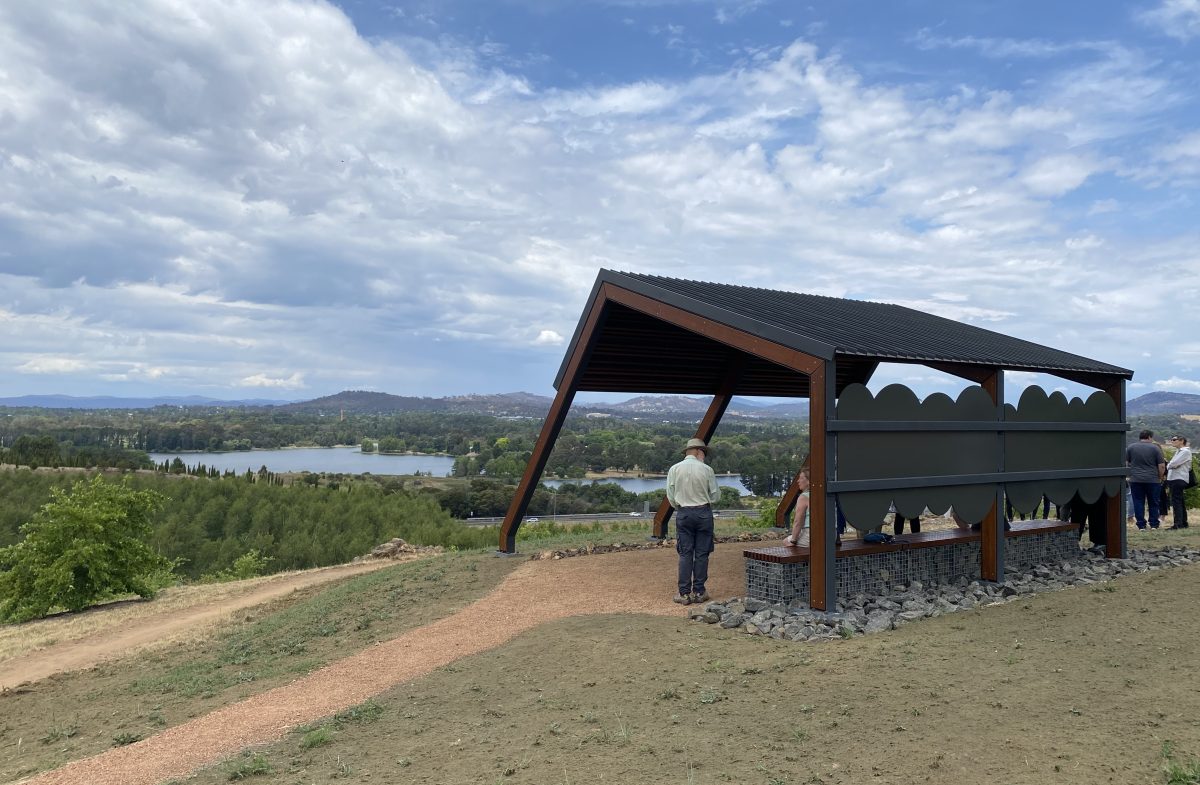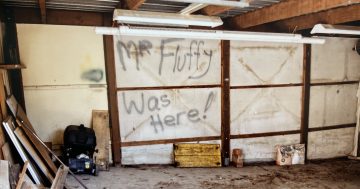
The Mr Fluffy Legacy place of reflection is located at the National Arboretum. Photo: Claire Fenwicke.
Reflection, education and ensuring the past mistakes aren’t repeated: that’s what the community hopes to gain from a new shelter to remember the impact of the Mr Fluffy crisis in Canberra.
The shelter in the Black Tupelo Forest at the National Arboretum has been officially opened to reflect on the impact the loose-fill asbestos insulation had on the more than 1000 people who had to leave their homes.
Sustainable Building and Construction Minister Rebecca Vassarotti said it was about recognising the people at the centre of the “awful” chapter of the city’s history.
“With many other disasters, such as bushfires, there’s a real community understanding of the impact of these kinds of disasters, but with the Mr Fluffy loose-asbestos disaster, there was actually a different experience where a lot of different people were being affected, people often lost their neighbours as they moved out of the suburbs, and there was a real scar,” she said.
“They had built lives, they had renovated these properties, they had built beautiful gardens – these were people’s homes.
“There wasn’t a collective community understanding, so this place of reflection will be really important in terms of being able to educate people, as well as ensuring people understand the ongoing impact.”
A place of reflection had been recommended by the Mr Fluffy Community and Expert Reference Group.
Member and former Mr Fluffy homeowner Chris Redmond said he also wanted the site to serve as a reminder to all governments about what could be learned from the incident – the things it did right and areas that could be improved.
“I think the richest learning, for me, has been how to engage, how to get a team together that’s going to hear the community, and get the best response and tailor those individual responses to those people,” he said.
“[We were] dealing with all of the minutiae, from the keys to the gardens to the things that they wanted to take from their houses, but more importantly, how to transition to another place.”
Mr Redmond didn’t realise that discovering Mr Fluffy insulation in his home meant he would have to move out at first. He said a better-coordinated response across the different government directorates would be needed if a similar incident occurred again.

Former Mr Fluffy homeowner Jenny Cameron officially opened the place of reflection. Photo: Claire Fenwicke.
It’s a view also held by fellow former Mr Fluffy homeowner Jenny Cameron, who officially opened the new shelter.
Mrs Cameron had lived in her home for 41 years when it was discovered it contained loose-fill asbestos insulation.
While she knew some people had chosen to stay in their homes – with some calling for a Board of Inquiry into the buyback scheme – she and her husband decided based on the next generations.
“Our children grew up [in the house], and they were exposed to asbestos, and we didn’t want the same thing to happen to our grandchildren,” Mrs Cameron said.
“We were devastated … we expected to live out our lives there.”

Former Mr Fluffy homeowners Jenny Cameron and Chris Redmond at the place of reflection. Photo: Claire Fenwicke.
She said it was important to have a place that could serve as a reminder of past mistakes to ensure they wouldn’t be repeated.
“I know there’s lots of other reasons why people lose or have to leave their homes, but I think the government maybe needs to be a bit more careful about things that happen,” Mrs Cameron said.














